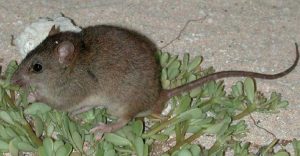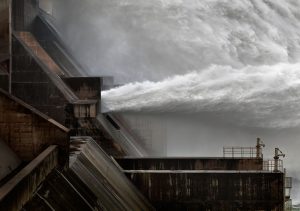The decline in the number and species of waterfowls in Kaziranga National Park along the banks of the Brahmaputra in north-eastern India has sent alarm bells ringing, not only among ornithologists but also among policymakers who see this as a sign that wetlands in this Himalayan valley are drying faster than before.
Famous as the world’s best-known habitat of the great one-horned rhino, the national park is also an ecosystem with a large number of rare bird species. But the survey held last December 19-20 came up with a count of 10,412 birds of 80 species, a significant decline, compared to the 479 species found between 1993 and 1999 by Maan Barua and Pankaj Sharma and compiled in their paper published in the journal Forktail.
Barua and Sharma had seen Nordmann’s Greenshank, Terek Sandpiper, Red-necked Phalarope and Black-bellied Tern – none of which was found last December. Barua and Sharma had felt the Black-bellied Tern was endangered even then, back in the 1990s. They wrote of the bird, “Seen regularly in all major wetlands in the park but numbers appear to have declined during 1997-99. The global population of this species is believed to be below 10,000 individuals (Rose and Scott 1994). It is threatened by the destruction of its breeding habitat.”
The species numbers are not exactly comparable, because Barua and Sharma had covered the entire Kaziranga National Park, while the recent survey was limited to the wetlands and swampy areas in the eastern, central and western ranges of the park, according to Rohini Ballav Saikia, Kaziranga’s Divisional Forest Officer. But then, these are the areas where the survey would expect to find the maximum number of birds, especially waterfowl.
Apart from the Brahmaputra, there are eight major water bodies in the Kaziranga National Park, a tiger reserve and UNESCO world heritage site spread over 430 square kilometres.
Mostly ducks
Of the 10,412 birds counted this time, 8,074 were ducks and geese. Bar-headed Geese topped the count with more than 3,000, followed by Gadwalls, Lesser Whistling Ducks, Common Teals, Northern Pintails, Indian Spot-billed Ducks, Greylag Geese, Eurasian Wigeons, Mallards, Ruddy Shelducks, Common Pochards, Northern Shovelers, Ferruginous Ducks and Chinese Spot-billed ducks. The lowest counts among the ducks and geese – Anatidae family – came from Garganeys, the critically endangered Baer’s Pochards, Tufted Ducks, Common Pygmy Geese and Falcated ducks.
![Northern pintails in Kaziranga, Brahmaputra wetlands [image by: Chandan Kumar Duarah]](https://dialogue.earth/content/uploads/2019/02/Northern-pintails-in-Kaziranga.jpg)
Waterfowls are found in 92 permanent and more than 250 seasonal water bodies in Kaziranga. The bulk of the waterfowl population was counted in the vast expanse of Sohola – a wetland formed by six shallow water bodies in the eastern range.
Anowarduddin Choudhury, an author, wildlife expert and a commissioner in the state government of Assam, said the survey was important “because a good avifauna reflects on the health of the ecosystem. Although the rhino prefers grasslands, wetlands are also crucial for the animal’s survival because it depends on submerged vegetation in shallow water bodies. The animal also needs to wallow.”
![Kaziranga is best known for its one-horned rhino population, an animal critically dependent on wallowing in wetlands to control its body temperature [image by: Chandan Kumar Duarah]](https://dialogue.earth/content/uploads/2019/02/A-Rhino-in-a-wetland-in-Kaziranga.jpg)
Earlier warnings
Barua and Sharma had warned about the declining numbers of other birds as well, with particular concern over the Pallas’s Fish Eagle and Black-headed Ibis. The sharpest decline the two experts had recorded was in the number of Spot-billed Pelicans, and now the numbers have gone down further. Experts say the reasons are human disturbance in nesting and roosting areas and decline in fish availability.
Most of the Kaziranga National Park is on the left or southern bank of the Brahmaputra, and the forest slopes up from the river to the Karbi Anglong hills. Many streams and small rivers run from these hills, through the forest and then to the Brahmaputra. Dried-up older channels form shallow ox-bow lakes, locally called beels. They form an ideal habitat for birds, especially waterfowl.
These beels used to hold water almost throughout the year, but over the last two decades locals have noticed that they are drying up within two or three months after the southwest monsoon that brings South Asia most of its annual rainfall between June and September.
Scientists have said one effect of climate change is fewer rainy days, but heavier rainfall in those days. The result is that compared to a previous era, more of the rainwater now flows down rather than percolating underground and keeping the wetlands alive.
In Kaziranga, this drying up of wetlands has led to an increase in areas of tall grass and a reduction in areas of short grass. This gradual change will have important ecological implications in the future, experts warn.
No protection for Brahmaputra wetlands
Outside protected areas such as the Kaziranga National Park, wetlands are largely seen as wasteland waiting to be drained and built or farmed upon. But apart from their function as natural water reservoirs, wetlands are an essential habitat for many birds. India’s northeast is essentially a complex of streams, rivers, flood plains, valleys, mountains and wetlands, and it is this combination that accounts for the rich diversity of plant and animal life in this region. For example, the area is home to over 750 bird species.
Of them, 689 bird species are found in Assam alone, including some of the 100 unfortunately-named EDGE (Evolutionary Distinct and Globally Endangered) species, such as the Bengal Florican, Red-headed Vulture and Greater Adjutant Stork.
The survival of the White-bellied Heron, one of the 50 rarest birds in the world that has an estimated global population of less than 250, depends largely on the existence of its wetland habitat. These birds are found in very low numbers over a large area comprising Bhutan, Yunnan in China, northern Myanmar and northeast India. The black-necked crane is another rare bird that breeds on the Tibetan Plateau and winters mainly in the lower altitudes of Qinghai, on the Yunnan-Guizhou Plateau, north-eastern Bhutan and Zemithang and Sangty Valley in West Kameng district of Arunachal Pradesh. It is the only high altitude crane among the 15 species found in the world.
The Greater Adjutant Stork, locally known as Hargila, is struggling for existence because its breeding habitat is continuously under threat. The global population of this bird is not more than 1,000 and Assam houses 70-80% of this population. It is a scavenger bird sometimes seen in garbage dumping sites like state capital Guwahati’s own wetland – Deepor Beel – but the number is going down as the wetland is encroached upon more and more.
![Deepor Beel in Guwahati, the largest city in Assam, faces the threat of encroachments, like many other wetlands in the state [image by: Chandan Kumar Duarah]](https://dialogue.earth/content/uploads/2019/02/Deepar-Beel.jpg)
The Assam Remote Sensing Application Centre has identified 3,513 wetlands in the state, spread over 764,372 hectares – 9.74% of the state’s area. But many are drying out, getting silted over or being encroached upon.
Scientists say that vanishing wetlands means not only loss of water bodies – the loss could add to climate change by releasing a large amount of the trapped greenhouse gas methane. “Our environmental policy has largely failed to acknowledge the benefits of wetlands. The state governments classify them in land records as wasteland. So there has been rapid conversion of water bodies to other uses,” says Moloy Barua, president of Early Birds, a conservation NGO.
The Wetland (Conservation and Management) Rules, 2017, which replaced the rules made in 2010, removed some of the related benefits of wetlands, such as natural beauty, ecological sensitivity, genetic diversity and historical value. Environmentalists have also criticised the 2017 rules for doing away with strong wetland monitoring systems and omitting important wetland types.
![<p>The recent survey has shown a drop in the number of birds in Kaziranga [Chandan Kumar Duarah]</p>](https://dialogue.earth/content/uploads/2019/02/Ducks-and-Geese-in-a-wetland-in-Kaziranga.jpg)




![Two fishermen on the Brahmaputra, a river that winds through four countries [image by: Sumit Vij]](https://dialogue.earth/content/uploads/2018/04/Brahmaputra-300x200.jpg)


![Aerial view of the Mekong Delta often referred to as the rice bowl of Vietnam [image by: Gareth Bright]](https://dialogue.earth/content/uploads/2018/02/Vietnam1-300x200.jpg)